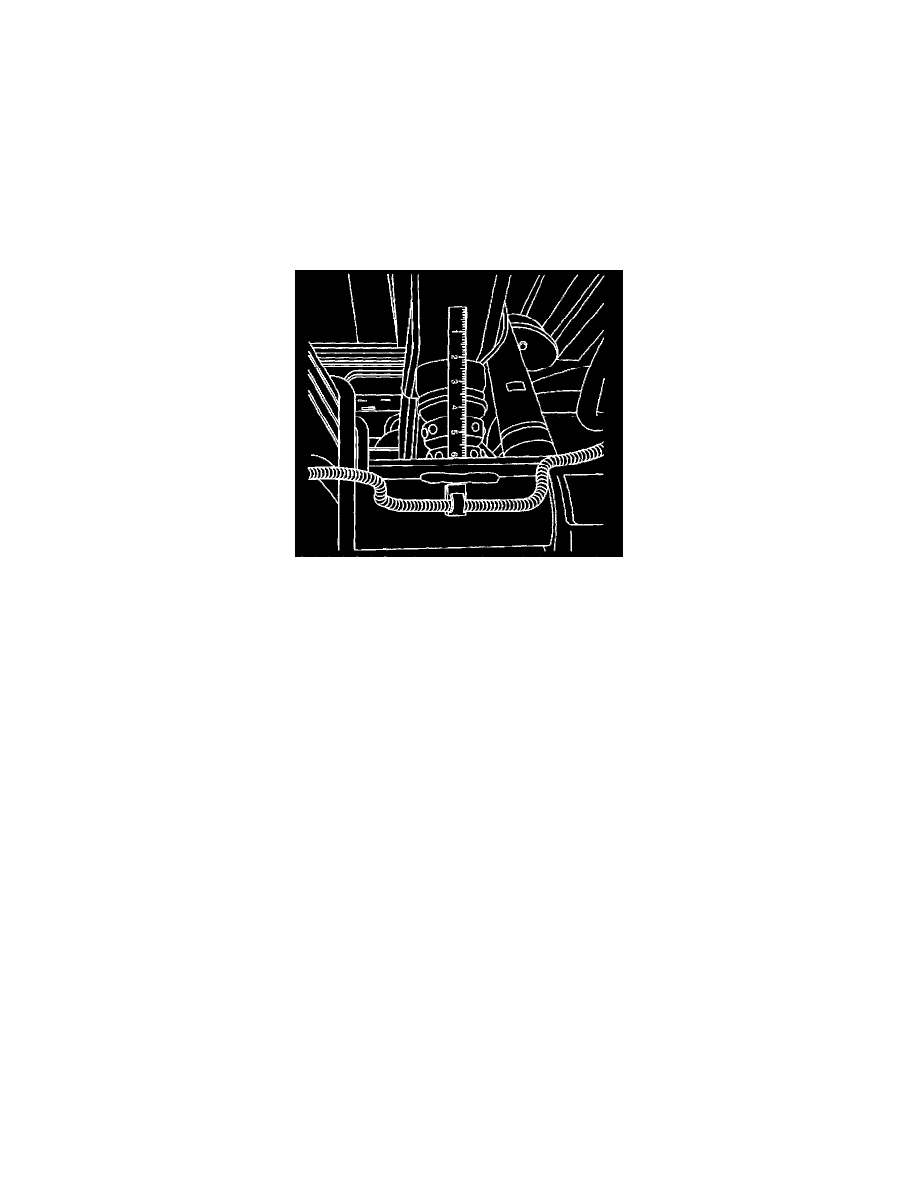Express 3/4 Ton Van V8-4.8L VIN V (2003)

3. If these measurements are still out of specifications after adjustment or are not equipped with torsion bars, inspect for the following conditions:
-
Sagging front suspension.
-
Collision damage
D Height Measurement
The D height measurement determines the proper ride height for the rear end of the vehicle. There is no adjustment procedure. Repair may require
replacement of suspension components.
Important: All dimensions are measured vertical to the ground. Trim heights should be within 12 mm (0.47 inch) to be considered correct.
1. Place hand on the rear bumper and jounce the rear of the vehicle. Make sure that there is at least 38 mm (1.5 inch) of movement while jouncing.
2. With the vehicle on a flat surface, lift upward on the rear bumper 38 mm (1.5 inch).
3. Allow the vehicle to settle into position.
Important: Measure the metal to metal contact points of the rear axle to the frame on the inboard side of the leaf springs.
4. Measure the D height by measuring the distance between the rear axle tube or rear axle bracket on vehicles with 7300 GVW rating and the frame.
5. Repeat the jouncing operation 2 more times for a total of 3 times.
6. Use the highest and lowest measurements to calculate the average height
7. The true D height dimension is the average of the highest and the lowest measurements.
8. If these measurements are out of specifications inspect for the following conditions:
-
Sagging rear leaf springs
-
Worn rear suspension components such as leaf spring bushings.
-
Collision damage
